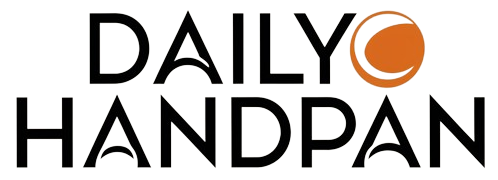The handpan, an evocative musical instrument, captivates musicians and listeners alike with its unique tonal quality and meditative presence. While its ethereal sounds are widely appreciated, one often overlooked aspect is the weight of the instrument. Understanding handpan weight can be crucial, especially for musicians who perform live, travel frequently, or merely seek a comfortable playing experience. This article delves into the various factors that influence handpan weight and what you can expect when purchasing or using one.
Materials and Construction
The primary factor determining the weight of a handpan is the material from which it is made. Handpans are typically crafted from steel, and various types of steel can be used, each contributing differently to the overall weight.
- Nitrided Steel: This type of steel is treated with nitrogen to increase its resistance to rust and enhance its durability. Nitrided steel handpans are moderately weighted, offering a balance between heft and portability.
- Stainless Steel: Known for its corrosion-resistant properties, stainless steel can be slightly heavier than nitrided steel, but it offers longevity and robustness. Musicians who prioritize durability may prefer this option despite the added weight.
- Raw Steel: Uncoated and untreated, raw steel handpans are often heavier due to the lack of any protective treatments that might otherwise reduce weight. These handpans require regular maintenance to prevent rust.
Size and Scale
The size and the number of notes or scales on a handpan also significantly impact its weight. Larger handpans with more notes will naturally weigh more due to the additional material required for their construction.
- Standard Size: A typical handpan has a diameter of about 21-22 inches with a weight ranging from 5 to 10 pounds, depending on the material and build. This size is manageable for most players.
- Mini Handpans: As the name suggests, these are smaller versions of the traditional handpan. Mini handpans are lighter and more portable, making them ideal for travel and quick jam sessions.
- Extended Range Handpans: These feature additional notes beyond the basic scale, increasing their diameter and weight. They can weigh up to 14 pounds, necessitating stronger stands and cases for safe handling and transportation.
Design and Craftsmanship
Every handpan is a unique piece of art, meticulously crafted by skilled artisans. The design intricacies and level of craftsmanship also play a role in the weight. Handpans with intricate designs or additional structural elements may weigh more.
Artisans often employ various techniques during the crafting process, such as:
- Double Layering: Adding an extra layer of steel can enhance the resonance and longevity of the instrument, but it also increases the weight.
- Reinforced Ding (Central Note): Some handpans feature a reinforced central note to prevent deformation over time. This reinforcement adds to the overall weight.
Portability Considerations
For musicians who frequently travel or perform live, understanding the weight of their handpan is crucial for practical reasons. Lightweight handpans offer the following benefits:
- Ease of Transport: Lighter handpans are more manageable and less cumbersome to carry around, particularly when navigating through airports or public transportation.
- Comfort during Performances: Portability extends to playability. A lighter handpan is easier to position and move during extended performances, reducing physical strain on the musician.
However, musicians who prioritize sound quality and durability might opt for slightly heavier options. It ultimately boils down to individual preference and the intended use of the instrument.
Impact on Sound Quality
The weight of a handpan can also affect its tonal qualities. Generally, heavier handpans produce a richer and more resonant sound due to the denser material. However, the craftsmanship and precision in tuning are critical in defining the ultimate sound quality, irrespective of weight.
- Resonance: Heavier handpans often have a more extended resonance, which is desirable for players seeking a more profound and immersive auditory experience.
- Clarity: Lighter handpans can produce a clear and crisp sound, making them suitable for intricate, fast-paced playing styles.
It’s essential for musicians to try different handpans and assess how the weight influences their sound and playing style before making a decision.
Maintaining Your Handpan
Regardless of the weight, proper maintenance of your handpan is crucial to ensure its longevity and sustained sound quality. Here are some tips for maintaining your handpan:
- Regular Cleaning: Clean your handpan with a soft cloth to remove fingerprints, oils, and dirt. Avoid harsh chemicals that could damage the surface.
- Oiling: Periodically apply a light coat of oil to protect against rust, especially if your handpan is made from raw steel.
- Storage: Store your handpan in a cool, dry place. Use a protective case during transport to prevent scratches and dents.
Conclusion
Understanding the weight of a handpan plays a crucial role in selecting the right instrument for your needs. Whether you favor a lightweight handpan for its portability or a heavier one for its rich resonance and durability, each has its unique advantages. Evaluating factors such as material, size, craftsmanship, and intended use will guide you in making an informed choice.
Ultimately, the connection you feel with your handpan transcends its physical properties, creating a harmonious blend of musical expression and personal satisfaction. By considering the weight and related factors, you can ensure that your handpan journey is both enjoyable and musically fulfilling.
FAQs
1. How much does a typical handpan weigh?
The weight of a typical handpan ranges from 5 to 10 pounds, depending on the size, material, and craftsmanship involved in its construction. Extended range or larger handpans can weigh up to 14 pounds.
2. Are lighter handpans less durable than heavier ones?
Not necessarily. While heavier handpans may offer increased resonance and durability due to denser materials, lighter handpans are often designed with portability in mind and can still be quite durable. The craftsmanship and care taken in construction play significant roles in determining durability.
3. How does the weight of a handpan affect its sound quality?
The weight of a handpan can influence its tonal qualities: heavier handpans generally produce a richer and more resonant sound, while lighter handpans tend to have a clear and crisp tone. The quality of sound is also highly dependent on the precision of the tuning and overall craftsmanship.
4. Is it difficult to travel with a handpan?
Traveling with a handpan can be manageable if you have the right equipment. Lightweight handpans are easier to carry and transport, especially with a good quality protective case. Many musicians travel with their handpans regularly without significant issues.
5. What maintenance does a handpan require?
Regular maintenance of a handpan includes cleaning with a soft cloth to remove oils and dirt, applying a light coat of oil to protect against rust (especially for raw steel handpans), and storing the instrument in a cool, dry place. Using a protective case during transport is also recommended to prevent damage.





